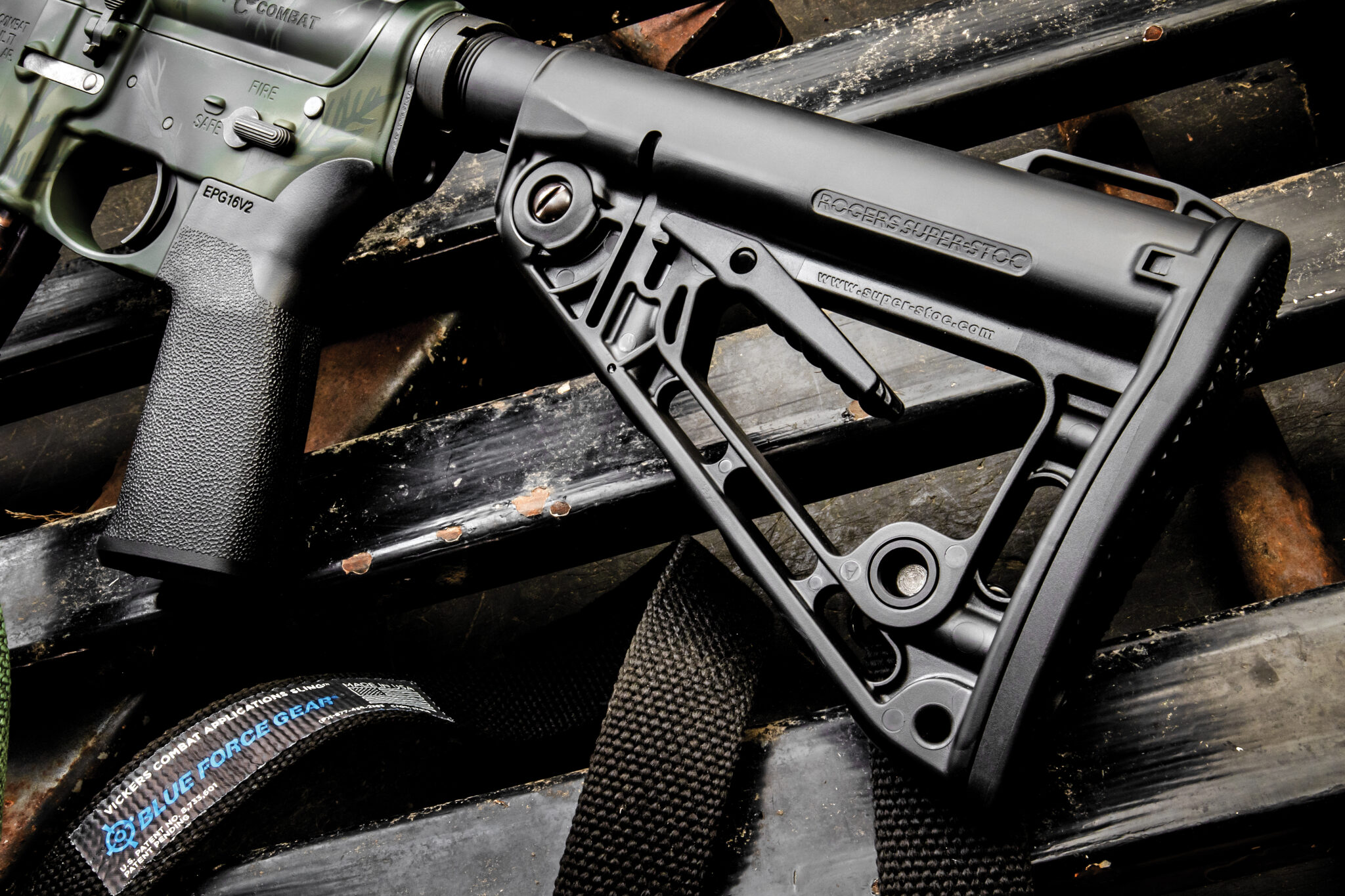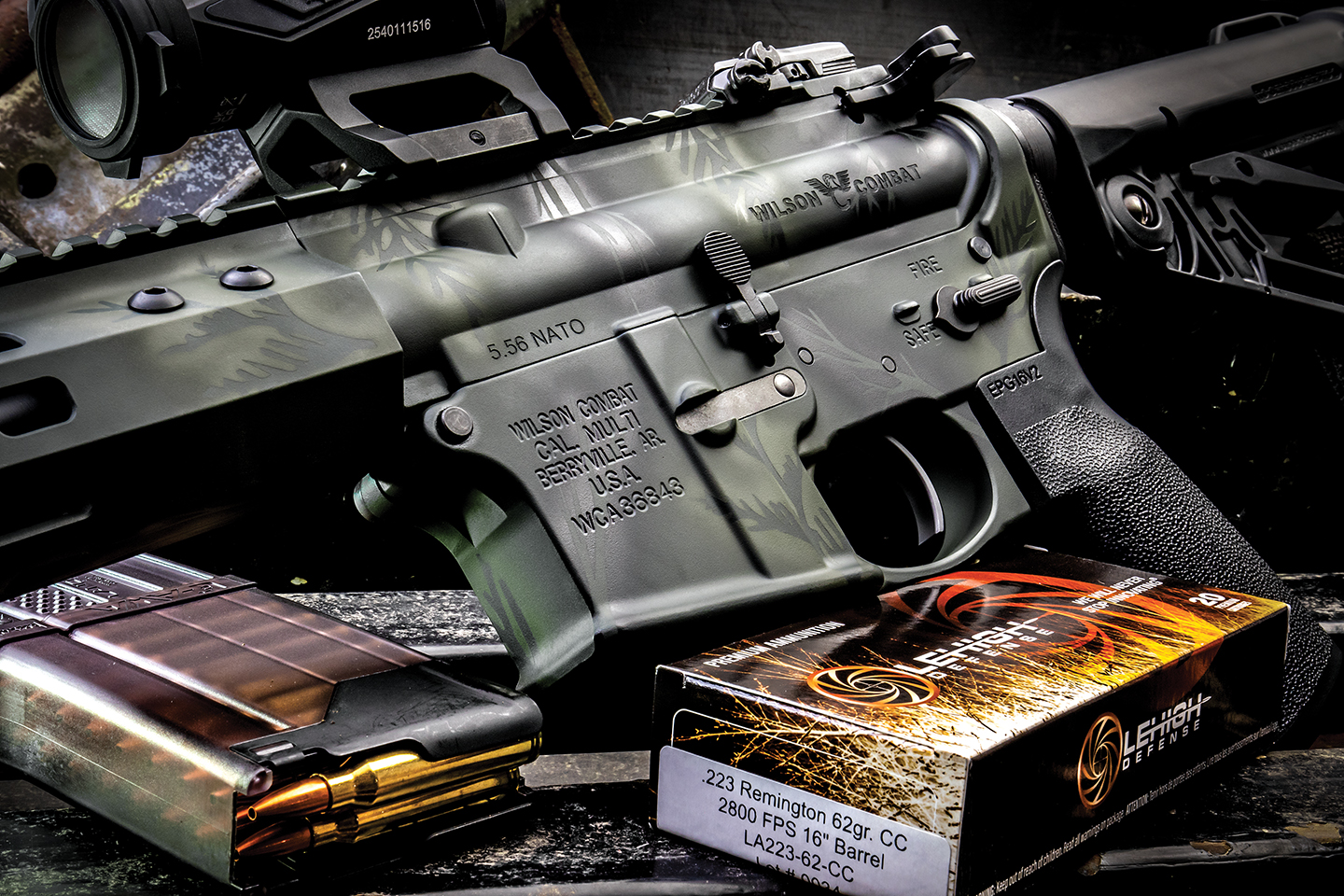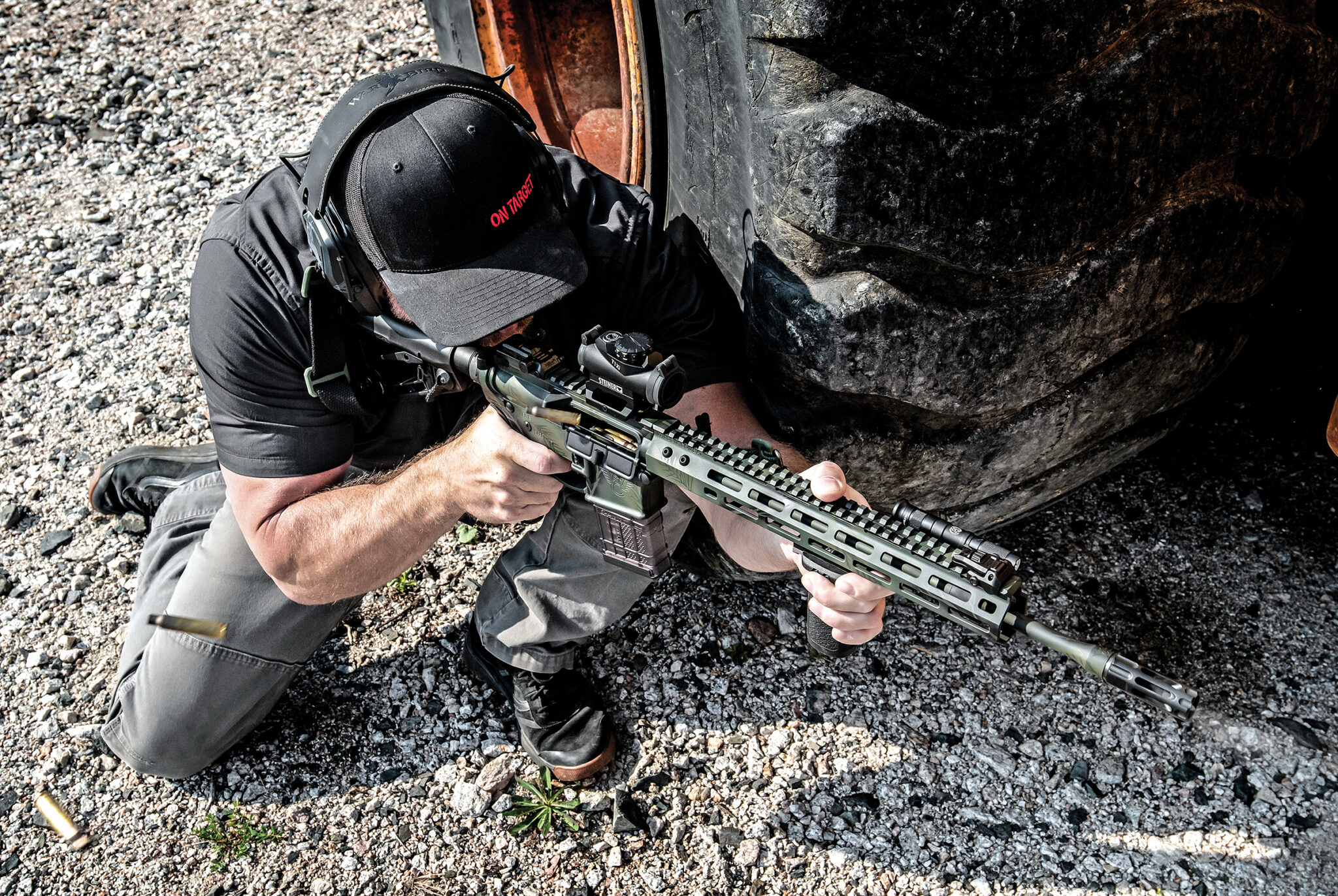Wilson Combat Tactical Ultralight
By Mike Dickerson
If you think an ultralight AR-15 can’t deliver superb accuracy, think again

Not very long ago, there was a time when the terms “ultralight” and “AR-15” did not go together. Most AR rifles were significantly heavier than lightweight bolt action rifles, and if you wanted a featherweight AR, you pretty much had to build it yourself.
Now, manufacturers build ARs in just about any configuration you can imagine, and it’s a lot easier to find an ultralight AR rifle. Finding one that’s highly accurate is a different story, as many manufacturers tend to cut some corners in their quest to shed weight.

Wilson Combat has changed that with their new Tactical Ultralight rifle. The gun weighs just 5 pounds, 10 ounces, but it shoots phenomenally well for such a light gun. In fact, it shoots on par with my 7-pound Wilson Combat Recon Tactical rifle. Much of that is due to the fact that Bill Wilson, who long ago established a reputation for building highly accurate and reliable guns, personally laid out the specifications for the Tactical Ultralight rifle.
Wilson Combat guns are not cheap. The best never is, and the Tactical Ultralight rifle is easily the best and most accurate lightweight AR with a standard-length 16-inch barrel that I’ve ever fired. That match-grade barrel accounts for a significant amount of weight savings. It starts out at full diameter at the receiver but quickly tapers down to a slender profile. It tapers down even more to a very slim profile forward of the gas block. The button-rifled barrel on our 5.56 NATO-chambered test rifle is made of 416R stainless steel with a 1:8 rate of twist. The gun is also available in 300 Blackout and the impressive 300 H’AMR.

The barrel’s muzzle is threaded 1/2X28 and equipped with a Q-COMP muzzle brake, which is just one example of the advanced engineering that goes into Wilson Combat rifles. It’s a hybrid brake/compensator that effectively reduces side blast while producing little muzzle flash and considerable recoil reduction.
Some weight was also saved by using forged receivers rather than the billet receivers used on other builds, along with a low-mass, nickel boron bolt carrier group, and a lightweight Mission First Tactical grip. The barrel on our test rifle, as well as the Mil-Spec hard anodized upper and lower receivers, are protected with Wilson Combat’s Armor-Tuff finish. The standard rifle comes in black, but a wide variety of custom finishes are available. Our test gun wore a subdued but attractive green camo pattern.

Atop the upper and the 12.6-inch M-LOK rail, you’ll find a full-length Picatinny rail. The handguard has a multitude of M-Lok attachment points at the 1, 3, 5, 6, 7, 9, and 11 o’clock positions. The rifle comes with a short additional Picatinny section in place at the 6 o’clock position and an M-LOK QD sling swivel cup at the 9 o’clock position. Notably, there was zero wobble between the upper and lower, and very little in the six-position, skeletonized Wilson/Rogers Super-Stoc, which has two flush QD cups for mounting slings.
The rifle uses a standard buffer with a Mil-Spec buffer spring and has an intermediate-length gas system with a low-profile gas block. Functionally, the rifle fed, fired, and extracted a variety of factory ammo with monotonous reliability. One thing you won’t find on this rifle is a forward assist. Ditching it saved additional weight, and it isn’t really needed thanks to the smooth-cycling nickel boron-coated bolt carrier group, which has high built-in lubricity. Otherwise, the usual AR-15 controls are in the normal locations.

The Tactical Ultralight comes equipped with Wilson Combat’s excellent TTU (Tactical Trigger Unit) M2, built with an H13 heat-treated trigger, hammer, sear, and a stainless-steel spring in a CNC machined housing. The trigger has a listed pull weight of 3.25 to 4 pounds, but the trigger on my test rifle did better than that, breaking crisply and consistently at a pull weight of 3 pounds. As a two-stage design, the trigger has a short amount of take-up before it stacks solidly. A little extra pressure is all that’s needed to break the trigger. The trigger unquestionably contributes to the gun’s downrange precision, and because it has a relatively short and fast reset, you can run this gun fast. It is very much a shooter’s trigger, built by shooters.
The rifle ships with one 20-round Lancer L5 AWM (Advanced Warfighter Magazine), which is a step above many AR magazines in durability and reliability. It’s a hybrid steel-and-polymer design with a one-piece steel feed lip, which will maintain its shape over time, mated to a constant-curve polymer body with a no-tilt follower. The body is transparent, so you can see at a glance how many rounds remain in the magazine.

I found the gun to be very light, handy, and maneuverable in the hands, especially when used with a lightweight optic like the Steiner T1Xi red dot sight. This red-dot sight’s compact, lightweight, and robust design makes it a good match for the rifle and it delivers HD optics with a switchable reticle, allowing you to choose between a 2 MOA dot, 60 MOA circle, and red dot with a circle.
For accuracy testing, I switched to one of the old-but-trusty scopes I often use for testing ARs, a Leupold Mark AR Mod-1 3-9X40 mm model, mounted into a one-piece Burris PEPR mount. This brought the rifle’s weight up to 7 pounds. I would probably not use a scope on this gun for tactical or defensive use — a lightweight, defense-oriented AR demands a lightweight optic. I put the scope on this one to better test its accuracy potential, and the results surprised me even though I’m used to Wilson Combat guns delivering good accuracy. However, I didn’t think the same level of performance was possible in such a lightweight AR with a slender barrel.

I was wrong. The rifle proved to be superbly accurate — four of five tested factory loads printed sub-MOA average 100-yard groups. The one load that didn’t has seldom produced tight groups for me in most any gun I’ve fired it in. Good performers included a Wilson Combat 77-gr. HPBT load, which had the best standard deviation and extreme spread numbers of all tested loads, as well as a Lehigh Defense 62-gr. load and a Federal 69-gr. Sierra Gold Medal load.
The load that stole the show, however, was a Barnes 55-gr JHP BT load, which printed 0.44-inch average groups and a 0.34-inch best group. That is fantastic accuracy for any AR, let alone a lightweight. The rifle may have “tactical” in its name, but it’s clearly capable of much more and would be an excellent option for use on varmints and predators. The rifle ships with a very nice Wilson Combat padded soft case with ample room for the rifle with a scope mounted, four external magazine pouches, and an extra zippered compartment. MSRP for the Tactical Ultralight rifle is $2,150. For more information, contact Wilson Combat; Tel.: (870) 545-3310; Web: www.wilsoncombat.com.




Specifications:
Caliber: 5.56 NATO, as tested
Action Type: Direct Impingement Gas Operated
Trigger: Two-stage Wilson Combat TTU M2
Rate of twist: 1-8
Barrel: 16-inch stainless steel
Finish: Green Camo Armor-Tuff
Handguard: Wilson Combat 12.6-inch M-LOK rail
Grip: Mission First Tactical
Magazine/capacity: Transparent 20-round Lancer L5 AWM
Sights: None, full-length Picatinny optic rail
Overall Length: 33.25 – 36.5
Weight: 5 pounds, 10.2 ounces
MSRP: $2,150





















